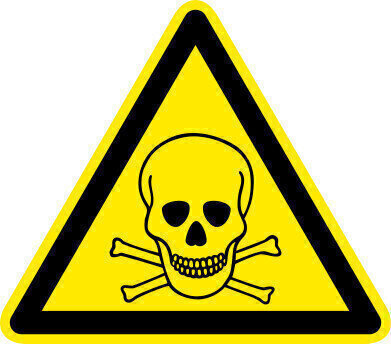News & Views
What is a Hazardous Substance?
Oct 26 2014
Hazardous substances are materials, gases, chemicals or germs which can cause damage or debilitation to a person’s health. These are present all around us in our everyday lives, in many household products, commodities and even in the air we breathe.
For the most part, they come into contact with us in such small quantities that they are virtually harmless. However, there are exceptions to this rule, of course. Babies and infants are particularly susceptible to them, due to the fragile and developing nature of their bodies and the inquisitive nature of their minds. The article, The Bogeyman is Real - Chromium (VI) Determination in Toys, looks at the directives and regulations imposed upon toy manufacturing to reduce risk to little ones.
Hazardous Substances in the Workplace
Whilst most adults are immune to the negligible levels of hazardous substances they come into contact with, many are exposed to heavier dosages due to their work habits. In the UK, a body of safety measures known as Control of Substances Harmful to Health (COSHH) was brought into force in 2002 to deal with dangerous substances in the workplace. The varieties of substances to which COSHH applies include:
- Chemicals and chemical products. Suppliers of chemical products must supply consumers with a chemical safety data sheet, outlining the particular dangers of each individual chemical, as well as advice on handling and storage.
- Fumes. Harmful fumes are emitted from factories and vehicles in alarming amounts each day. These must be controlled as best as possible.
- Vapours, gases and mists. Gases which can be potentially dangerous to health are often prevalent in workplaces – special gas masks or other safety measures are recommended or required.
- Nanotechnology. Due to their diminutive size, nanoparticles can infiltrate the human body and “stick” to surfaces – theoretically being absorbed by the body – with relative ease. This can alter and damage the heart, skin, lungs and reproductive organs – and possibly even cause cancer.
- Germs. Germs and bacteria which can cause diseases, such as legionnaires or leptospirosis, are also deemed hazardous substances.
The following are also considered hazardous substances, but due to their having their own legislation and specific regulations, are not covered by COSHH:
- Lead
- Radioactive elements
- Asbestos
In 2009, the Institute of Engineering and Technology (IET) published an article, A Picture of Health - Workplaces That Are Bad for Your Health Are Bad for Your Business, in its Annual Buyers’ Guide. The article pointed out the poor standards of safety in many UK workplaces and the drastic need for measures to be taken to counteract this.
COSHH is an attempt to rectify this, by putting in place a series of guidelines with which employers must comply in order to operate legally. However, figures published by the Health and Safety Executive (HSE) several years later reveal that 2.1 million people still claimed to be suffering from a work-related injury or illness. This fact highlights the need for greater care to be continually taken when working with harmful substances in the workplace.
Digital Edition
Lab Asia 31.2 April 2024
April 2024
In This Edition Chromatography Articles - Approaches to troubleshooting an SPE method for the analysis of oligonucleotides (pt i) - High-precision liquid flow processes demand full fluidic c...
View all digital editions
Events
Apr 17 2024 Tokyo, Japan
Apr 22 2024 Marrakech, Morroco
Making Pharmaceuticals Exhibition & Conference
Apr 23 2024 Coventry, UK
Apr 23 2024 Kintex, South Korea
Apr 23 2024 Seoul, South Korea









.jpg)








